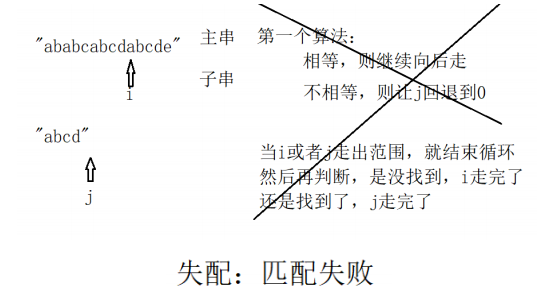
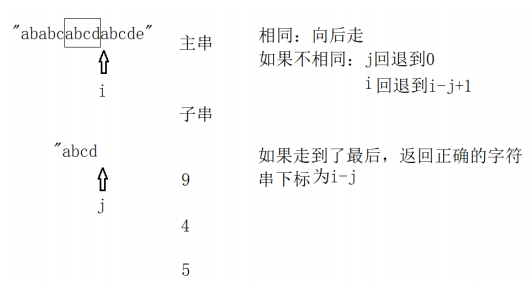
优点:容易理解,代码容易实现

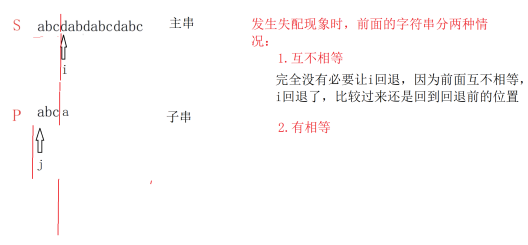
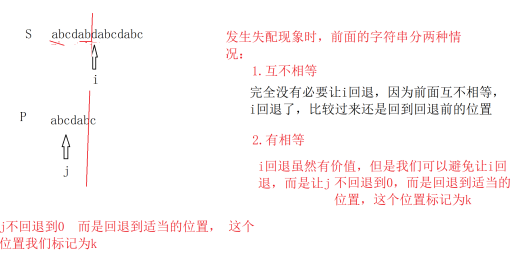

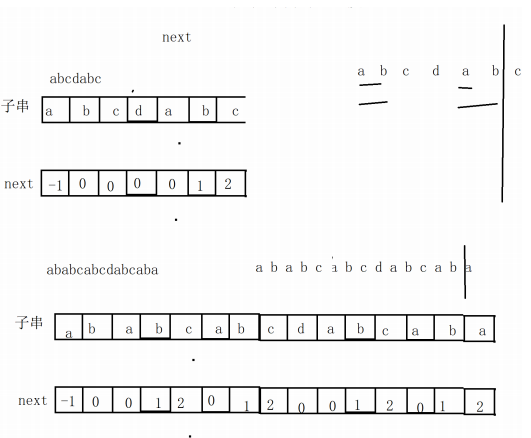
//next数组保存是,失配后,返回前面字符串的最大相似度的地方 static int *Get_next(const char *sub) { int len = strlen(sub); int *next = (int *)malloc(sizeof(int) * len); next[0] = -1; next[1] = 0; int j = 1; int k = 0; while(j+1 < len)//j+1是通过已知求未知的未知位置,求的这个未知位置得合法,在数组长 度内就合法 { if((k==-1) ||sub[j] == sub[k]) { next[++j] = ++k; /*k++; j++; next[j] = k;*/ } else { k = next[k]; } } return next; } //KMP算法,特点:i打死不回退,时间复杂度O(n+m) int KMP_Search(const char* str, const char *sub, int pos) { //断言 防止指针为NULL 并且防止pos位置非法 if(str == NULL || sub == NULL || pos < 0 || pos >= strlen(str)) return -1; int lenstr = strlen(str);//获取主串长度 int lensub = strlen(sub);//获取子串长度 int i = pos;//i代表主串的判断位置 得从pos开始判断 int j = 0;// j代表子串的判断位置 int *next = Get_next(sub); while(i<lenstr && j<lensub)//如果主串和子串都没走到头,就继续进行 { if((j == -1) || str[i] == sub[j])//两者相等,则同时向后走 { i++; j++; } else//不相等,根据回退规则,进行回退即可 { //i = i-j+1;//i打死不回退 //j = 0; j回到到next[j]里面 j = next[j]; } } free(next); //while退出,有两种情况,1.没找到 2.找到了 if(j >= lensub)//如果子串走到头,则判断找到了 { return i-j; } return -1; } //朴素(BF)查找算法 特点:1.相等,同时向后走 2.如果不相等,j回退到0,而i回退的i-j+1 // 3.如果j走除了范围,证明找到了,返回值为i-j //面试笔试必考,不会也得背过 int BF_Search(const char* str, const char *sub, int pos) { //断言 防止指针为NULL 并且防止pos位置非法 if(str == NULL || sub == NULL || pos < 0 || pos >= strlen(str)) return -1; int lenstr = strlen(str);//获取主串长度 int lensub = strlen(sub);//获取子串长度 int i = pos;//i代表主串的判断位置 得从pos开始判断 int j = 0;// j代表子串的判断位置 while(i<lenstr && j<lensub)//如果主串和子串都没走到头,就继续进行 { if(str[i] == sub[j])//两者相等,则同时向后走 { i++; j++; } else//不相等,根据回退规则,进行回退即可 { i = i-j+1; j = 0; } } //while退出,有两种情况,1.没找到 2.找到了 if(j >= lensub)//如果子串走到头,则判断找到了 { return i-j; } return -1; } int main() { const char *a = "ababcabcdabcde"; const char *b = "abcd"; int tmp = KMP_Search(a, b, 6); printf("%d\n", tmp); return 0; }
原文:https://www.cnblogs.com/xpei-1124/p/14769632.html